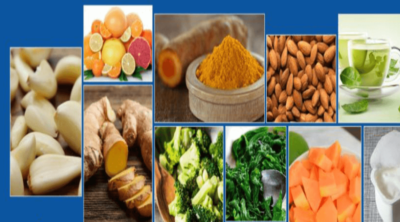
Jasmine rice is Thailand’s most exported rice and popular the world over for its long grain and fragrance. This aromatic rice has several health benefits to offer in both its brown and white state.
Did You Know?
The substance 2-acetyl-1-pyrroline (2-AP) is responsible for giving Thai Hom Mali rice (or KDML 105) its fragrance, which is similar to pandan (Pandanus amaryllifolius) leaves.
Also known as ‘Thai/Khao Hom Mali’, jasmine rice is native to Thailand. This rice is known for its subtle jasmine-like aroma and long-grain shape, which is much like Basmati. The low amylose content (AC – 12-17%) and gelatinization temperature (GT) gives this rice a soft and sticky texture. This NutriNeat article discusses the health benefits and nutrition facts of jasmine rice.
Cooked Jasmine Rice – Nutrition in 1 Cup (200 g)
● Protein : 4.2 g
● Carbohydrates : 44.5 g
● Calories : 205
● Fiber : 0.63 g
● Niacin : 2.3 mg
● Thiamine : 0.26 mg
● Iron : 1.9 mg
● Selenium :11.8 mcg
● Total Fats : 0.44 g
Health Benefits of Jasmine Rice
Keeps Gastrointestinal Tract Clean
Being rich in insoluble fiber, jasmine rice helps in alleviating constipation. Brown rice has greater insoluble fiber, and thus, those suffering from bouts of constipation could consider making jasmine rice a part of their diet. Fiber helps in softening stool and regulates the moisture level in the digestive system. That being said, plenty of water must also be made a part of the diet to help prevent this health condition from recurring.
Low Protein
Those looking for an alternative food that reduces their daily protein consumption may opt for jasmine rice, which contains 4.2 grams of protein per cup. According to the International Rice Research Institute (IRRI), the protein content in jasmine rice is ‘modest’ and that its brown variety is “slightly more nutritious than enriched white rice, with twice as much fiber, five times the vitamin E, and three times the magnesium.” People who have been asked to go on a low-protein diet plan or suffer from kidney and liver problems may seek the advice of their doctors about consuming jasmine rice.
Quick Energy Boost
Jasmine rice has a glycemic index (GI) of 109, which is fairly high. The 44.5 g of carbohydrates present in this rice converts to glucose, which in turn release instant energy for the body, thus, making it a favorable dietary addition for athletes, etc. The downside of consuming rice with such whopping GI is that it will cause the blood sugar levels to rise instantly, which can harm people with diabetes and other related health problems.
Almost Free of Fats
Although 200 grams of cooked jasmine rice may have 0.44 g of fat, this amount is almost negligible compared to all the fatty titbits we consume every day. Rice also makes you feel fuller and for longer, thereby, preventing unnecessary snacking in between meals. However, although jasmine rice may be less fattening, it must be eaten along with other healthy accompaniments and in moderation.
Brown Jasmine Rice Triumphs
Like all rices, jasmine rice is available as both white and brown types, and has more nutritional benefits to offer in its organic/brown state, wherein the rice retains its nutritious bran and has greater fiber content. Secondly, brown rice has more amounts of nutrients such as polyphenols, phytic acid, manganese, and selenium. When steamed instead of cooked, brown rice offers more amounts of calcium, phosphorous, potassium, and niacin.
Therefore, based on your nutritional requirement and calorie count, you may consider adding this aromatic and delicious rice to your diet.


